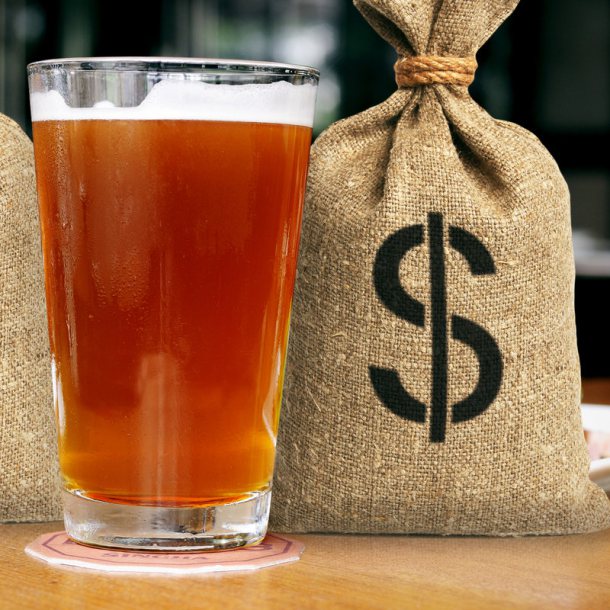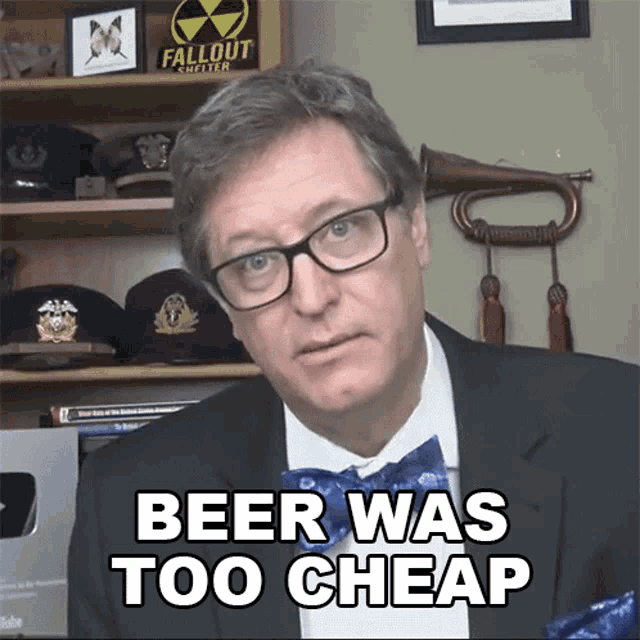This $1 Beer Cost Me $88: The Hidden Costs Of Impulse Buying
Ever had one of those moments where you thought you were getting a great deal, only to realize later that it wasn’t so great after all? Well, let me tell you about the time a $1 beer turned into an $88 nightmare. It’s not just about the price tag—it’s about understanding the hidden costs behind our everyday decisions. So grab a seat, because this story is going to hit close to home for anyone who’s ever fallen victim to impulse buying.
Let’s be real here. We’ve all done it. You’re at the store, minding your own business, and then BAM! There it is—a shiny, cheap product screaming, “Buy me now!” In my case, it was a $1 beer. How bad could it possibly be, right? But as it turns out, that innocent little can of suds came with a whole lot of baggage I wasn’t prepared for. And trust me, the lesson I learned wasn’t cheap.
This isn’t just about me and my poor financial decision-making skills. It’s about something bigger: the psychology of spending and how companies use tactics to get us to spend more than we intended. Stick around, because by the end of this article, you’ll have a better understanding of what really happens when we make those seemingly harmless purchases.
Read also:Discover The World Of Beautiful Female Car Models A Celebration Of Talent And Glamour
Understanding the True Cost of That $1 Beer
When I first saw that $1 beer on the shelf, I thought I’d hit the jackpot. Cheap beer? Yes, please! But what I didn’t realize was that the cost wasn’t just monetary. There were other factors at play—factors that added up to a whopping $88 bill by the time I was done. Let’s break it down:
1. The Initial Expense: More Than Just One Beer
First things first, I didn’t just buy one beer. Oh no, that would’ve been too easy. See, the store had a promotion—buy three, get one free. So there I was, thinking, “Why not?” Before I knew it, I had four beers in my cart. Suddenly, that $1 beer turned into $4.
2. The Transportation Costs
But wait, it gets worse. Since I was already at the store, I figured I might as well stock up on a few other things. Next thing I knew, my cart was full, and I needed to drive home. Gas prices being what they are these days, that added another $15 to the total cost of my little shopping trip.
3. The Opportunity Cost
Then there’s the opportunity cost. Instead of spending that money on the beer, I could’ve put it toward something more meaningful—like saving for a vacation or paying off debt. But nope, I chose beer. And let’s not forget the time I spent driving to the store, which could’ve been spent doing something productive. That’s another $20 worth of wasted potential right there.
The Psychology Behind Impulse Buying
Now that we’ve established the true cost of that $1 beer, let’s talk about why we do it. Why do we fall for those impulse buys? It’s all about psychology, my friend.
1. The Appeal of Discounts
Discounts are like a siren song for consumers. We see that little “50% off” sticker, and suddenly we think we’re getting a great deal. But are we really? Not always. Companies know this, and they use it to their advantage. By offering discounts, they create a sense of urgency that makes us act without thinking.
Read also:Baddies Caribbean Reunion Part 2 Full Episode All The Spicy Details You Need
2. The Fear of Missing Out (FOMO)
Then there’s FOMO—the fear of missing out. When we see everyone else enjoying something, we feel the need to jump on the bandwagon. Whether it’s a trendy new product or a limited-time offer, FOMO can cloud our judgment and lead us to make purchases we don’t actually need.
3. The Power of Marketing
And let’s not forget marketing. Companies spend millions of dollars every year on advertising campaigns designed to make their products irresistible. From catchy slogans to eye-catching packaging, they know exactly how to push our buttons and get us to buy.
Breaking Down the Numbers
Let’s take a closer look at the numbers behind that $1 beer. Here’s a breakdown of how the costs added up:
- Beer purchase: $4
- Gas for the trip: $15
- Opportunity cost: $20
- Other impulse buys: $49
- Total cost: $88
See what I mean? What started as a simple $1 beer turned into a much larger expense. And this isn’t an isolated incident. It happens to all of us more often than we’d like to admit.
How to Avoid Falling Into the Trap
So how do we avoid falling into the trap of impulse buying? Here are a few tips:
1. Make a List
Before you go shopping, make a list of what you need and stick to it. This will help you stay focused and avoid those unnecessary purchases.
2. Set a Budget
Know how much you can afford to spend before you leave the house. Once you hit that limit, stop shopping. It’s as simple as that.
3. Wait 24 Hours
If you see something you want but don’t need, give yourself 24 hours to think about it. Chances are, by the time the day is over, you’ll have forgotten all about it.
Real-Life Examples of Impulse Buying
To drive the point home, let’s look at a few real-life examples of impulse buying gone wrong:
1. The $50 Coffee Maker
One of my friends saw a coffee maker on sale for $50 and thought it was a steal. But when she got home, she realized she didn’t have the right filters or coffee beans to use with it. By the time she bought everything she needed, the total cost was closer to $150.
2. The $20 Sweater
Another friend bought a sweater for $20, thinking it was a bargain. But when she got home, she realized it didn’t fit right and wasn’t her style. She ended up donating it, which meant she wasted both money and time.
The Importance of Financial Literacy
Financial literacy is key to avoiding impulse buying. When we understand how money works and how to manage it wisely, we’re less likely to make poor financial decisions. Here are a few resources to help you get started:
- Investopedia: A great resource for learning about personal finance and investing.
- NASDAQ: For those who want to dive deeper into the world of stocks and investments.
- Consumer Financial Protection Bureau: Offers tips and tools for managing your finances.
Conclusion: Learn From My Mistakes
So there you have it—the story of how a $1 beer cost me $88. Hopefully, by sharing my experience, I’ve helped you avoid making the same mistakes. Remember, impulse buying isn’t just about the price tag—it’s about the hidden costs that come with it. By understanding the psychology behind our spending habits and taking steps to manage our finances wisely, we can make better decisions and save ourselves a lot of headaches down the road.
Now it’s your turn. Have you ever fallen victim to impulse buying? Share your story in the comments below. And don’t forget to check out some of our other articles on personal finance and money management. You never know what you might learn!
Table of Contents
Article Recommendations


